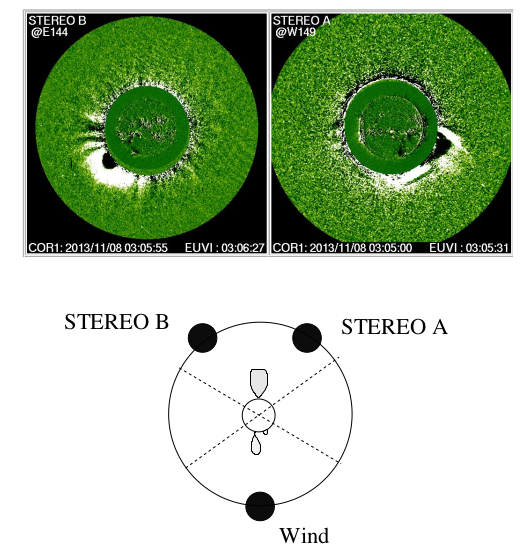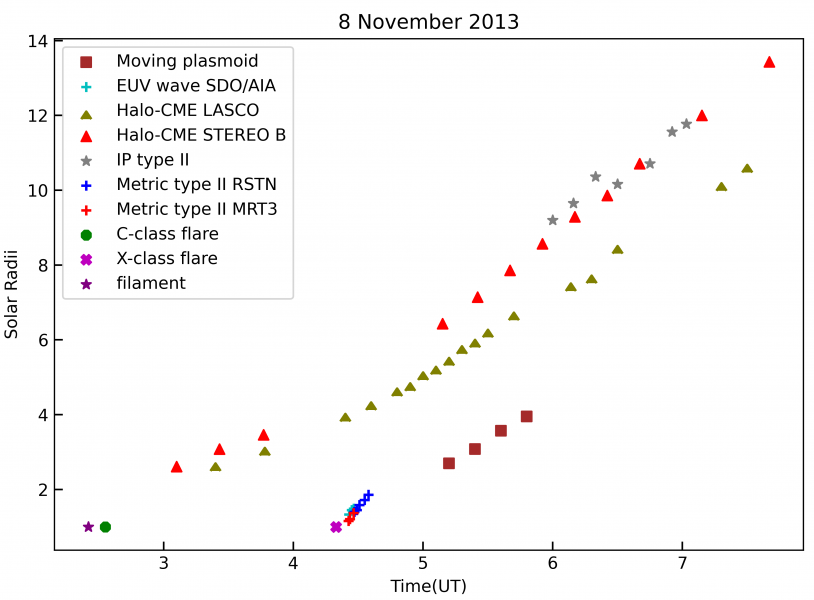During times of high solar activity flares and coronal mass ejections (CMEs) occur close in time, sometimes even simultaneously, and it may be difficult to identify their source regions. Especially fast CMEs that are observed as propagating fronts high in the corona, can originate from a region on the Earth-facing side, or from the far side. To determine their origins and direction of propagation, one needs to do a careful analysis that includes observations from both sides. Comparing imaging with radio spectral data can tell if, and where, transients produce propagating shock waves.
We performed a case study on a sequence of events that included a GOES X-class flare associated with an EUV wave, a metric type II burst, a halo-type CME, and an interplanetary (IP) type II burst, to find out if they were produced by just one event. Doubts arose from the fact that the estimated height-times of the transients did not match well.
Imaging from the far side by STEREO A and B instruments, revealed another eruption and a possible source for the CME. We calculated source heights for the metric and IP type II bursts, and compared them with the CME heights observed from all views.

Figure 1. Launch of a CME on the far side of the Sun (STEREO A and B observations). The far side eruption originated from a region near W180. An X-class flare on the earthside originated from an active region at E15. Cartoon shows the locations of these eruptions, together with STEREO A and B spacecraft positions. SOHO/LASCO and SDO have the same observing direction as Wind.

Figure 2. Measured and calculated heights of all propagating structures. For flares and filament eruption start times are shown.
Our conclusion is that the X-class flare, followed by the EUV wave, caused the metric type II burst and a plasmoid ejection that got superposed on the halo CME structures. The backside eruption produced the halo CME and the IP type II burst. The metric and IP type II bursts were not connected, but were created by separate propagating shock waves.
Based on a recent paper: S. Pohjolainen, N. Talebpour Sheshvan, and C. Monstein: Separating the effects of earthside and far side solar events. A case study. Advances in Space Research, Vol. 72, Issue 9, 1 November 2023, Pages 4074-4081. DOI: 10.1016/j.asr.2023.09.009
